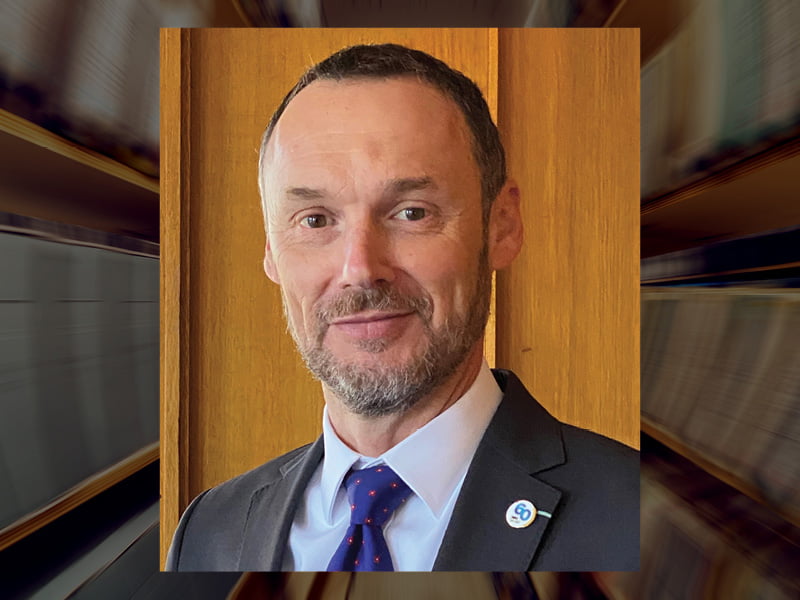The National Archives of Australia (NAA) has been in the news lately. It desperately needs many millions of dollars to digitise Australia’s decaying historical records, particularly those on film and magnetic tape. The Budget gave it almost nothing.
But preserving the past for posterity is far from the only challenge the NAA faces. Preserving the present is a challenge undreamt of when film and magnetic tape were created.
How, for example, do you preserve an executable object, such as an artificial intelligence algorithm: an entity that is meaningless unless and until it can be executed?
NAA Director General David Fricker says this is a very real challenge facing the organisation today. He told the InnovationAus Commercial Disco podcast, “If you want to replay any of those AI algorithms you’ll need an operating environment within which to run that algorithm because it won’t be compatible with the technology of 20 years in the future.

“Preservation of algorithms in the age of AI is going to be vitally important for Australians in the future to develop a good understanding of what government policy was, how it was implemented, how their particular rights and entitlements were determined,” he said.
“We’re right in the middle of it. It’s a hot discussion for us right now.”
Mr Fricker was talking to InnovationAus following the formal launch early in May of NAA’s policy document Building trust in the public record: managing information and data for government and community, which came into effect in January.
It “identifies key requirements for managing Australian Government information assets (records, information and data),” and “helps Australian Government agencies improve how they create, collect, manage and are able to use information assets.”
Mr Fricker said the policy’s focus on trust, as reflected in its title, had been very deliberate.
“In the 21st century citizens of a democracy need to be able to trust their democratic institutions. And so we’re pitching this policy very deliberately in that way, because our work in capturing, preserving keeping accessible records of government is really, in the end, just about you and me, and our families, and everybody else in Australia, being able to trust our government.
“So when we get to the ballot box, we can exercise our democratic rights fully informed, and with a good eye on our past, and a good eye on our future.”
Australia’s archives, Mr Fricker said, are the foundation of its democracy.
“Everything we value in Australia, the rule of law and democracy, our freedoms and our rights are all underpinned by records, by evidence that can prove we have those rights.”
With most recently created archival information being digital, he said cybersecurity was now a top priority for the NAA.
“It’s a very attractive target for a hostile actor wanting to launch a cyber-attack, either to destroy the information, to exfiltrate the information, or indeed, as an act of information warfare, to manipulate the information, to plant falsehoods, to pervert the course of public opinion in Australia, and to deny our right to have a free informed public discourse in democracy.”
The NAA falls within the federal government’s cybersecurity regime, but Mr Fricker said it had particular issues because it aggregated other agencies’ information into its holdings. “We could talk about this for many, many hours. It’s a vitally important aspect of what we do.”
Mr Fricker spoke with InnovationAus prior to the Budget announcement and appeared optimistic that it would deliver funding to address urgent priorities, following an independent review of the NAA undertaken by the former secretary of the Department of Finance, David Tune.
The Tune Review was submitted to the attorney general in January 2020, but made public only in March 2021. It recommended the government fund a seven-year program to urgently digitise at-risk materials, for a total cost of $67.7 million.
Mr Fricker told InnovationAus, “David’s recommendations were that we are doing the right things, we are performing an important role, and there are some urgent requirements that we face.
“He made 20 recommendations to address those and I am now in discussion with the government on which of those recommendations we can take forward to address this urgency.
“We’ve got large scale issues confronting us that we need to meet over the next few years. So I’m looking forward to the work that we are doing within government to have those recommendations addressed.”
However, the budget delivered only $700,000 of additional funding, forcing the NAA to take desperate measures. It is now seeking funding direct from the public via its website.
Do you know more? Contact James Riley via Email.
